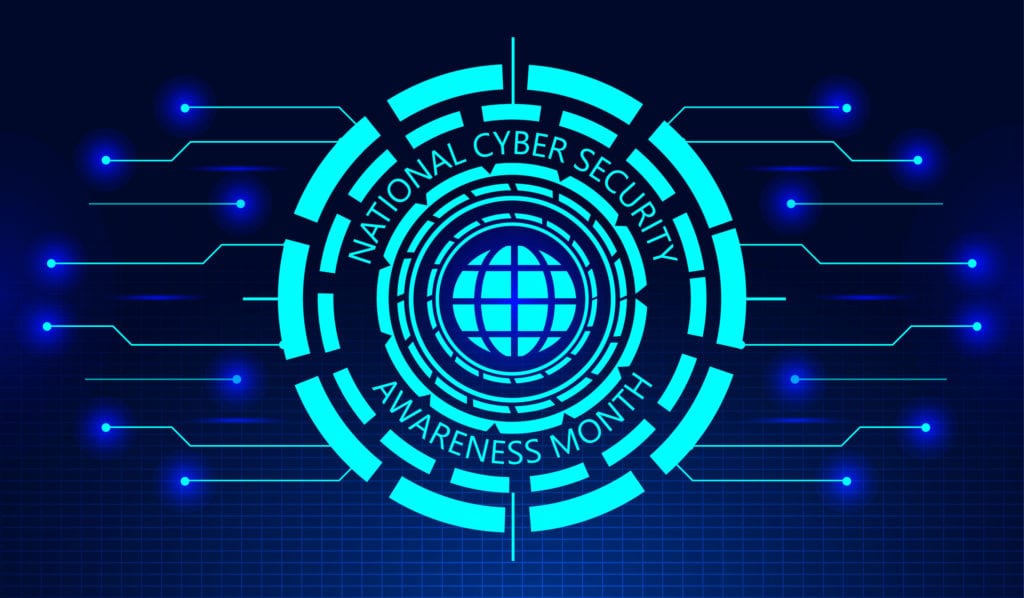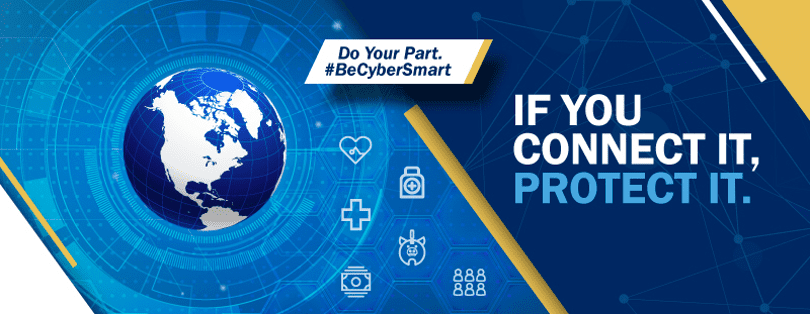
Every year since 2004, October has been a month where cybersecurity receives additional emphasis. National Cybersecurity Awareness Month (NCSAM) was started by the Department of Homeland Security’s cybersecurity division and the National Cyber Security Alliance to help Americans stay safe online.
This year’s theme is “Do Your Part. #BeCyberSmart” and it focuses largely on device protection, with its “If You Connect It, Protect It” tagline.
Today’s homes and offices have more internet connected devices than ever. Over the last four years, the number of U.S. devices that connect online has risen by over 44% to 260 million.
Homes have become business networks in many cases due to the dramatic rise in at-home workers this year because of the pandemic. Not all of those devices are receiving remote support to help them stay maintained and secure.
Device security should include computers, laptops, mobile devices, and Internet of Things (IoT) devices, but not all get the same protection. People tend to focus most on computer security, while leaving other devices less protected.
We’ll go through several cybersecurity tips from Fully-Verified below to cover all the different types of devices you may have at home or office.
If You Connect It, Protect It!
Anything connected to the internet has a risk of being hacked, being infected with a virus or malware, or having data stolen. That’s why it’s important to see every device on your network as a potential security risk and take proper precautions.
Use the month of October as a catalyst for assessing your current technology ecosystem and how well each connected device has been secured from online threats. Here are some tips that can help!
Desktop/Laptop Security
It’s important to take a layered security approach to your computer safety. Devices are often being used away from an office firewall, which means they need additional network protections.
Here are some of the layers of security you should have on your desktop or laptop:
- AI-Powered Antivirus/Anti-Malware: You want an anti-malware program that can detect suspicious behavior so it can find zero-day threats that may not yet be in a threat database.
- Use a VPN Away from the Office: A VPN encrypts all traffic and helps prevent data being stolen. It’s smart to use one whenever you’re not on an office network that has firewall protections.
- DNS Filtering: DNS filtering helps prevent malware infections and credential theft caused by phishing links to malicious websites by blocking these sites.
- Anti-Spam/Anti-Phishing Email Filters: Phishing is the main delivery vehicle of ransomware, spyware, trojans, and other types of malware threats. Using an email filter can help keep spam and phishing emails out of employee inboxes.
- Keep OS, Software & Firmware Updated: Make sure you have computer updates being installed in a timely manner for all operating system updates, software, and firmware updates.
And don’t forget physical device security. There is a laptop stolen approximately every 53 seconds. It’s important to use screen locks, “find my device” protections, and have the ability to remotely lock and wipe a device.
Smartphone/Tablet Security
Mobile devices are increasingly being targeted by malicious apps that spread spyware, banking trojans, and other dangerous threats. Mobile devices are often left unprotected without any antivirus or other security protections.
Here are some things you should be doing to protect your mobile devices from cyberattacks:
- Use a Mobile Antivirus/Anti-Malware: Ransomware and other malware can and does attack mobile devices and can then follow their network connection to infect other devices. You should use a mobile antivirus application.
- Be Careful About New Apps: You should only download apps from trusted sources like the official Microsoft, Apple, and Google app stores. There are many scam apps that pose as free utilities but harbor spyware or banking trojans.
- Use a VPN: Mobile devices should also connect through a VPN when they’re on an unsecure Wi-Fi network to encrypt the connection.
- Keep Devices Updated: Keep your device operating system and all apps updated to ensure you have the latest security patches being applied.
IoT Device Security
One of the most at-risk types of devices are smart gadgets (aka IoT devices). They’re often plugged in, left on default passwords and are often attacked within minutes.
Many IoT devices are attacked within 5 minutes of being connected to the internet.
Here are some best practices for keeping your smart gadgets from getting hacked:
- Change Default Logins: It’s vital to change the default manufacturer username and password immediately during setup. This keeps hackers from using them to tap into your device administration.
- Disable PnP & Unneeded Features: Often IoT devices will have sharing and connection features, like PnP (Plug and Play) that make it easy for other devices to connect, but these can be exploited by hackers. Any you don’t absolutely need should be turned off.
- Don’t Use Model/Brand Naming: When you name your device during setup, that name is displayed on a network and can be found by a hacker. Don’t make it easy for them, use non-descript names that don’t include the brand or model.
- Keep IoT Devices Updated: When is the last time you updated your router firmware? Check your IoT devices regularly, just like you do a computer, and install updates and security patches in a timely manner.
Secure Online Connections with Web Guardian
Two River Computer’s Web Guardian monitors and manages the security of your network devices to keep you protected.
Contact us today to learn more. Call 732-747-0020 or reach us online.



